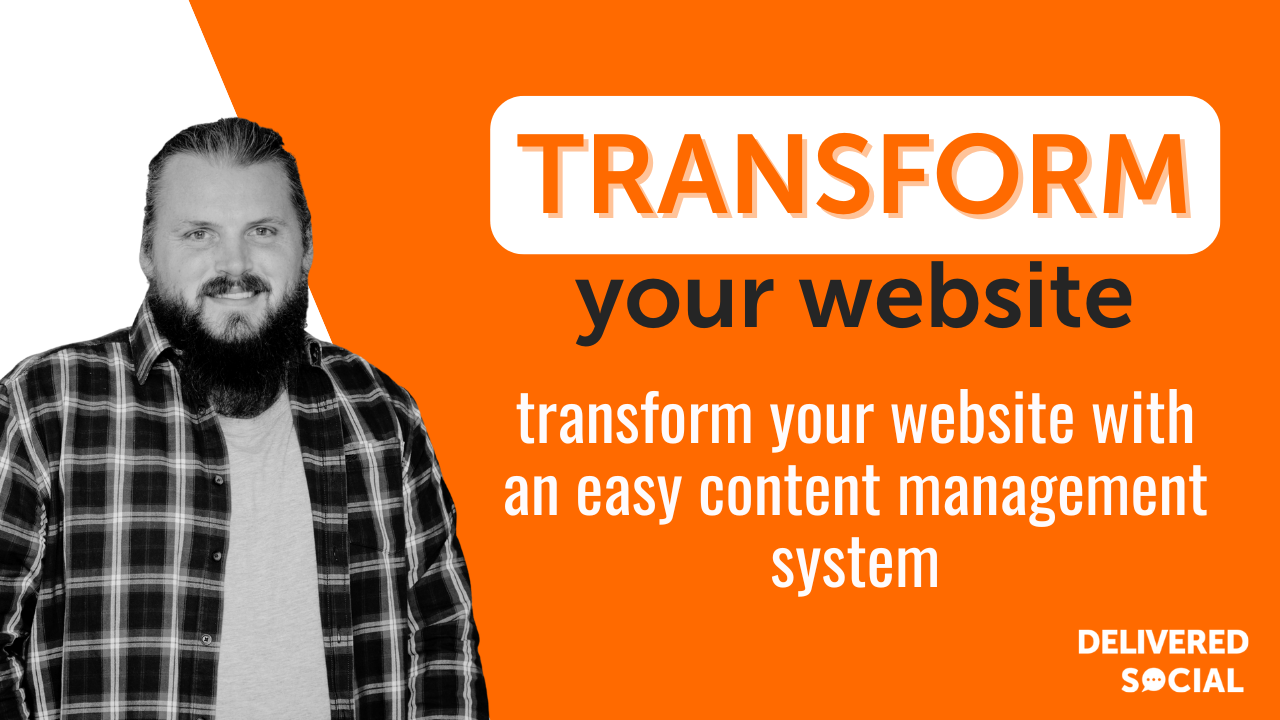
Managing a website shouldn’t take hours of your time or require advanced technical skills. Whether you’re updating blog posts, adding new pages, or changing images, a clear system makes all the difference. An easy content management system helps you handle tasks faster and with fewer errors. Instead of relying on developers for every change, you gain control over your site’s updates. This means quicker edits, better consistency, and more time to focus on growing your business. If your current setup feels slow or confusing, switching to a simpler tool can improve both how your site runs and how often it’s updated.
Boost Productivity with Streamlined Content Updates
Updating a website often takes time when teams must wait for developers. Delays grow longer as tasks pile up and priorities shift. An easy content management system removes that roadblock by giving your team direct access to make changes without extra steps.
When content needs edits, speed matters. With a simple interface, anyone on the team can log in and update text, swap images, or add new pages. No coding knowledge is required. This means marketing staff, support teams, or product managers can publish updates right away.
Real-time editing reduces back-and-forth communication between departments. Fewer emails and fewer meetings save hours each week. Teams gain control over their own workflows and timelines. Projects move faster because there’s no need to submit tickets or wait for approvals from technical staff.
This kind of setup also helps avoid errors caused by miscommunication during handoffs between writers and developers. The person who creates the content can manage it directly inside the platform, which keeps things accurate from start to finish.
The ability to preview changes before publishing brings more confidence to non-technical users. They can check formatting, layout structure, and links before pushing updates live. This lowers mistakes while increasing output across all channels.
A consistent publishing process builds trust within teams too. Everyone knows how updates happen and who handles them at each stage—which leads to smoother collaboration across roles.
With direct access to tools that simplify editing tasks, your team spends less time waiting—and more time delivering value through updated pages that reflect current goals or promotions quickly and clearly.

Simplify Design Changes Without Coding
Changing your website’s layout or structure no longer requires technical knowledge. With a modern, easy content management system, you can adjust the look and feel of your site using simple tools. Most platforms now include drag-and-drop features that allow users to move sections, update banners, or switch images without any programming.
These systems often come with built-in templates. You don’t need to build anything from scratch. You can pick a layout that fits your needs and customize it by clicking and dragging elements into place. This approach saves time and removes the need for a developer to make every small change.
Site owners can test different styles quickly. For example, if you want to try a new homepage format or change the position of text blocks, it takes just a few clicks. There is no need to wait for code reviews or updates from web teams. These changes happen in real time.
The editing process is visual, which helps reduce errors. Users see what they’re changing as they do it. Mistakes can be fixed right away without needing support from IT staff or outside contractors.
This method also supports better collaboration across teams. A marketing manager can update promotions while someone else adjusts the contact page layout—all without writing HTML or CSS.
With fewer steps involved, updates become faster and more consistent across pages. The ability to preview edits before publishing ensures accuracy.
A user-friendly interface reduces training requirements too. New team members learn how to use the tools quickly since most functions follow common patterns like clicking icons or dragging boxes into place.
This type of platform makes ongoing maintenance easier for businesses of all sizes because anyone with access can manage layouts when needed—no coding background required at any point during design updates.
Enhance SEO with Built-In Optimization Tools
Search engines rely on clear structure and accurate information. An easy content management system helps by offering built-in tools that support this process. These features allow users to edit page titles, adjust meta descriptions, and manage keyword placement without needing outside help.
Custom URLs improve how pages appear in search results. A clear link makes it easier for both users and search engines to understand what the page is about. Many systems let you change your URL paths quickly, giving you more control over how your content is displayed online.
Meta tags also play a key role in visibility. They give search engines short summaries of each page’s topic. Some platforms offer suggestions or fields where users can enter this data directly while creating posts or pages. This keeps the process simple and direct.
Images often slow down websites if not handled well. Built-in image compression tools reduce file sizes without affecting quality. Some systems even let you add alt text during upload, which helps describe images to search engines and improves rankings.
Internal linking features guide visitors through related topics on your site. This increases time spent on the site and boosts relevance in searches. With drag-and-drop menus or easy navigation settings, these links can be added without needing extra code.
Some systems provide real-time feedback while writing content. These checks highlight missing keywords or suggest shorter sentences for better readability scores—helping content meet ranking standards as it’s being made.
These built-in functions remove guesswork from optimization tasks. Instead of switching between plugins or hiring specialists, everything needed is inside one dashboard—saving time while improving performance across all pages of a website.
Improve User Experience Across Devices
People use phones, tablets, and desktops every day to visit websites. A site that works well on all screen sizes keeps users engaged longer. If a page does not load correctly or buttons do not respond on smaller devices, visitors leave quickly. This leads to lower traffic and fewer actions like purchases or sign-ups.
A responsive layout adjusts based on the user’s device. Pages resize images, shift text blocks, and move menus so that everything stays easy to read and use. An easy content management system helps make this possible without needing code changes for each type of device. It allows you to create one version of your page that adapts across platforms.
Navigation is another factor in mobile browsing. Small screens require clear menus and fast loading times. With the right CMS, you can manage these elements from one dashboard. You can preview how your pages look on different screen types before publishing them.
Touch controls also matter when people browse using their fingers instead of a mouse. A good CMS lets you design layouts with larger buttons and proper spacing so users don’t tap the wrong link by mistake.
Text formatting plays a role too—fonts must be readable without zooming in or scrolling sideways. The system should support automatic scaling so content remains accessible regardless of screen size.
An optimized experience builds trust with new visitors who expect smooth performance no matter what device they use. If your site loads fast, displays properly, and responds quickly to taps or clicks, people stay longer and explore more pages.
Using tools built into an easy-to-use platform reduces time spent fixing problems later. It also lowers the need for outside help since updates can be made directly through simple settings available in the system’s interface.
Meeting user needs across phones, tablets, laptops, and desktops is no longer optional—it’s part of running any successful online presence today.

Scale Your Website as Your Business Grows
As your business takes on more clients or offers new services, your website needs to keep up. Adding new sections, product pages, or blog posts should not require rebuilding the whole site. With an easy content management system, you can expand at any time without redoing your entire setup.
When launching a store or introducing new products, you need tools that let you upload items quickly. A reliable system allows you to update prices, add descriptions, and display images without delays. You won’t need to rely on a developer for each small change. This helps reduce cost and saves time.
If you’re growing in different areas—such as offering courses or adding customer portals—you can create those features using built-in functions or plugins. These tools support growth by providing options like user logins, payment forms, and feedback sections that match your current layout.
Publishing updates becomes easier too. Whether it’s publishing weekly articles or announcing promotions, the platform helps organize content by categories and dates. You stay in control while keeping everything clear for visitors.
The structure of the platform makes it simple to manage large amounts of information over time. As traffic increases and more people visit your site, the system continues working without slowing down performance.
You may also want multiple team members managing parts of the site as operations grow. The right tool gives access controls so different users can handle tasks like editing pages or reviewing comments without risking other parts of the website.
A strong backend ensures long-term use with little effort during changes. That means fewer technical problems when updating layouts or switching themes later on.
Using an easy content management system lets businesses adjust their websites anytime they shift direction—without needing to rebuild from zero each time plans change.
Strengthen Security with Regular Updates and Plugins
Keeping a website secure depends on how often it receives updates. A platform that offers frequent patches helps close weak points before they become issues. Threats change fast, so systems must stay current to reduce risk. An easy content management system supports this by offering automatic software updates and plugin improvements.
Most users rely on plugins for added features like contact forms or SEO tools. These add-ons also need regular attention. Outdated extensions can create gaps that hackers exploit. When a CMS allows quick plugin upgrades, site owners can act fast without delay or confusion.
The right platform makes it simple to manage these tasks from one dashboard. Users don’t need technical knowledge to apply new versions of themes or security tools. This lowers the chance of missing an important update due to complexity or lack of time.
Some platforms also send alerts when updates become available. These notices help site managers respond quickly before problems grow larger. Timely action is key to keeping data safe and avoiding downtime.
Security tools built into many CMS options scan for possible threats as well. They monitor activity, track login attempts, and block suspicious behavior automatically when set up correctly.
Backing up the site regularly adds another layer of protection in case something goes wrong during an update or plugin failure occurs. Many systems offer backup functions as part of their core features, making recovery faster if needed.
Choosing a system with strong support for updates and plugins reduces effort while improving safety across all areas of your website’s operation.
Unlocking the Full Potential of a Smarter Web Presence with An Easy Content Management System
Adopting an easy CMS is more than just a convenience—it’s a strategic move toward greater efficiency and growth. By streamlining content updates, simplifying design changes, and enhancing SEO with built-in tools, your team can focus on what truly matters: delivering value to your audience. The ability to scale seamlessly, ensure mobile responsiveness, and maintain strong security makes this solution essential for modern businesses. An easy content management system empowers you to stay agile in a competitive digital landscape—driving results faster while maintaining full control over your online presence.
Interested In Working Together?
Introducing Delivered Social. We’re The Most-Rated Digital Agency In Surrey & Hampshire – We’ve Got To Be Doing Something Right.
Delivered Social is a digital marketing agency with one mission—to help businesses grow. We’re famous in Guildford and Portsmouth for our social clinics. We believe in free advice. We build lasting relationships because our team prides itself on being helpful, which our clients appreciate.
If you are looking for a new website or an agency to manage your social media presence, we can help.
If you need something slightly different, here's a super handy list of all our services, or you can always email us.























